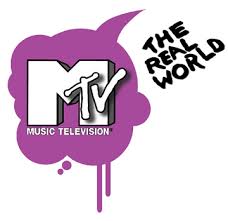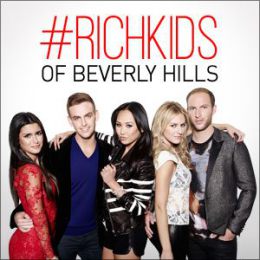|
What exactly is real? Well in today's post-modern world, one must go through an existential crisis to decipher their own reality. We live somewhere midst a physical and digital world, where it's often difficult to determine what exactly is real. Do we value our self worth on Facebook likes, Instigram followers, and re-Tweets? Is it easier to live life through others by watching reality TV and following people online?
In 1992 MTV began a seemingly never-ending attempt to tell/sell so-called the Real World. Yes a true story, where seven strangers are picked to live in a house, live and work together, have their lives taped to find out what happens when people stop being polite and start getting real. This was the first of many stepping stones leading into popular cultures love affair with reality TV. On June 17, 1994 viewers around the United States gathered together to watch the infamous police chase, where O.J. Simpson driven by Al Cowlings in a white Bronco were followed by over a dozen police cars on LA's 405. The chase lasted an hour and forty minutes, as very low speed, while O.J. held a gun to his head after being charged for the murder of his ex-wife Nicole Brown Smith. The chase holds records not only for captivating audiences but record Domino's pizza sales. Interesting enough, this was the Kardashian families fortuitous entrance into the limelight, where Robert Kardashian was OJ's lawyer and his wife Kris was Nicole's best friend. Although unbeknownst at the time, this has parlayed not only into fame and fortune, or Kanye and Kim's photo breaking Instigram and Twitter. Even though this seems like ages ago, the 90's were only stepping stones in the development of today's reality TV. Although often forgotten, television was devised to capture reality (i.e. the news), all the while providing programing to to escape reality. The first US news program aired in 1930, but it wasn't until 1940's when CBS hosted regularly scheduled nightly news. One of the first pivotal news reports was the bombing of Pearl Harbor, followed by the networks capturing everything along the way from the assignation of JFK, MLK, to the moon landing, 9/11, and hurricane Sandy. As an escape from reality we've had Leave It To Beaver, Three's Company, The Cosby Show, and Modern Family. But somewhere in time, these lines of reality and faux-reality got skewed. What may be someone else's reality such as American Idol, Survivor, Project Runway, Keeping up with the Kardashian's, Who Want's to be a Millionaire, Home Makeover, and Jersey Shore is in fact another person's faux-ality. Reality TV has received a ton of criticism because of it's use of the term "real" and that it is supposedly unscripted yet highly choreographed and edited. Reality TV highlights personalities and drama, whereby capturing uncomfortable scenarios it often exploits, humiliates, and alienates some participants, while others are rewarded. Today you have a million different shows thus complementing our individuality and eradicate emotions. This variety of TV allows us to live vicariously through others, turn off OR on our brains, experience extrodinary lives. In some weird way Reality TV is then somewhat superimposed into our lives, where when we're fishing we think of the Deadliest Catch, or shopping think of the Kardashians. If Abe Lincoln, Walter Cronkite, Ed Sullivan, or Johnny Carson turned on the TV today, they'd think we were all bipolar and watching TV is like a Choose Your Own Adventure book we can all experience the great outdoor spirit of Survivor, learn how to remodel a house with HGTV, and go shopping with the Rich Kids of Beverly Hills. Just remember even though this allows us to experience alternative lifestyles and emotions it is not real, ultimately you are staring at a box, and viewership proliferates programing.
0 Comments
Leave a Reply. |
LAJ
100 Objects of Popular and Material Culture is an blog exploring the manifestations of human consumption and commodity-ization. The purpose of this experiment is to explore material and popular culture in contemporary society by using objects and concepts to prompt wider questions and reflections. So by emulating The British Museum's and Neil MacGregor's format of A History of the World in 100 Objects I plan to satirically analyze and reinterpreted 100 material culture objects over the course of 2014. Material Culture is the study of our culture's consumption of stuff; namely the manifestation of culture through material productions where people's perceptions of objects is socially and culturally dependent. With this, objects reflect conscious and unconscious beliefs on the the individuals who fabricated, purchased, or used them, and by extension the society where they live. So examining materiality, cultural truths and societal assumptions may be discovered. As anthropologist Arjun Appaduai states "in any society the individual is often caught between the cultural structure of commodity-ization and his own personal attempts to bring a value and order to the universe of things." Objects and commodities make up a much larger symbolic system consisting of want and need, socio-economic status, fashion, etc. Often times form follows function whether the commodity, market, and or consumer forever evolve around one-another. Philosopher Pierre Bourdieu's theories of capital flow full circle; where regardless if you are a minimalist or a hoarder the world is made up of things and everyone will leave their footprint on the earth. So by humorously analyzing marketed objects and concepts, hopefully this blog will provide further incite into ideas of over-consumption, a disposable society, consumerism vs. anti-consumers, planned obsolescence vs. sustainability, as well as the greater good of mankind and future generations. Archives
March 2015
Categories |








 RSS Feed
RSS Feed